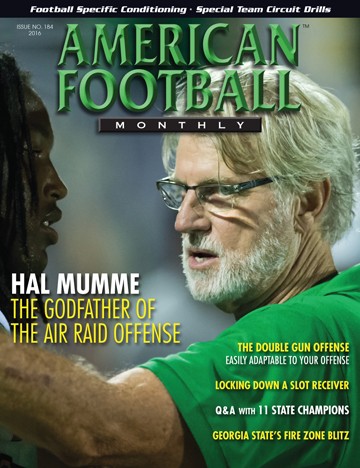Article CategoriesAFM Magazine
|
Speed Report: The Pros and Cons of Speed Training Modes and Their Effectivenessby: Dale BaskettFootball Speed Specialist © More from this issue Speed performance for football is filled with movement requirements of varying magnitudes. Letís discuss the uniqueness of football speed and movement as it relates to training applications and playing faster as a team. Every program should categorize which speed training procedures are the best suited for producing movements that are fast and controlled. Sometimes we look at the drills and movements and see only relative to the position requirements. What I stress would be to improve football speed by building athletes who can control any movement change with relative ease and sustained velocity. An athletes confidence factor on the field is far and away better when a player has movement skills that will be electric and controlled no matter what challenge may be presented. Too often we pigeon hole the athle....The full article can only be seen by subscribers.
|
|
|||||||
| HOME |
MAGAZINE |
SUBSCRIBE | ONLINE COLUMNISTS | COACHING VIDEOS |
Copyright 2025, AmericanFootballMonthly.com
All Rights Reserved





